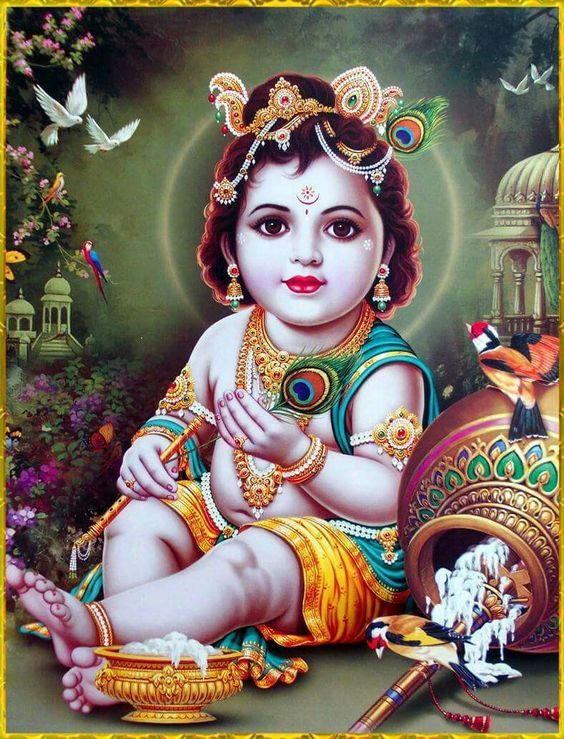India, a country renowned for its diverse array of holidays, observes Janmashtami with a fire and excitement that is unmatched. This happy event commemorates the birth of Lord Krishna, a holy figure who has fascinated millions of people for millennia. According to the Hindu calendar, which often corresponds to August or September on the Gregorian calendar, Janmashtami, also known as Krishna Janmashtami or Gokulashtami, occurs on the eighth day (Ashtami) of the Krishna Paksha (dark fortnight) in the month of Bhadrapada.

The Birth Myth of Lord Krishna
The birth of Lord Krishna is a beautiful and spiritually meaningful story. He is thought to be the eighth manifestation of Lord Vishnu, the Preserver, who took on human form in order to reinstate dharma and cosmic order. Hindu scriptures claim that Lord Krishna was born on a stormy night in the Mathura prison cell of his parents Vasudeva and Devaki. Lord Krishna’s father took the child across the rushing Yamuna River to the village of Gokul, where he was reared by his foster parents, Nanda and Yashoda, in order to protect him from the cruel King Kansa, who tried to kill him.
Janmashtami: Customs and Rituals
In India, Janmashtami is enthusiastically observed, however regional customs may differ. The following are some typical traditions and customs related to the festival:
Fasting: During the day before midnight, when Lord Krishna is thought to have been born, devotees frequently undertake a day-long fast. Only after the midnight celebration is the fast broken.
Midnight Celebration: There is a big celebration at midnight honoring the birth of Lord Krishna. Bhajans (devotional songs), the Bhagavad Gita (Krishna’s teachings), and the ‘Dahi Handi’ ritual are performed by devotees.
Dahi Handi: In this common practice, a clay pot with butter and curd is hanged at a height. Millennials construct human pyramids to disrupt the representing Krishna’s affection for butter. The tournament is energetic and competitive.
Visits to Temples: Devotees go to Lord Krishna’s temples, which are exquisitely decked for the event. Processions and special prayers are frequently held in temples.
Decorations: Images of Lord Krishna, bright rangolis (patterns formed with colored powders), and flowers are used to beautify homes and temples. Cradles and swings are frequently decorated to symbolize Krishna’s youth.
The Cultural Meaning of Janmashtami
Janmashtami is highly revered by Hindus in India and around the world:
Spiritual Awakening: The day of Janmashtami is one for meditation and devotion. It inspires people to think about Lord Krishna’s teachings and pursue a closer relationship with the almighty.
Cultural Unity: The festival brings together people from different origins, promoting harmony and a sense of belonging.
Values and Morality: The life and teachings of Lord Krishna place a strong emphasis on the virtues of righteousness, compassion, and humility. His tales, like the Bhagavad Gita, teach us important truths about life.
Celebration of Childhood: Lord Krishna’s charming antics and innocent mischief serve as a symbol of childhood’s innocence and fun on Janmashtami.
The festival serves as a catalyst for a variety of cultural endeavors, including music, dance, and theater, with many of the works representing events in Krishna’s life.
In conclusion, Janmashtami is not just a religious day but also a cultural celebration that captures the spirit of devotion, harmony, and Lord Krishna’s enduring knowledge. It serves as a reminder of the holy figure whose teachings have endured throughout time and continue to direct and uplift people on their spiritual journeys. As followers of Lord Krishna gather to commemorate his birth, they also honor the timeless ideals he stands for.
click here to embark on a thrilling journey of fun and excitement at funexpresshub.com